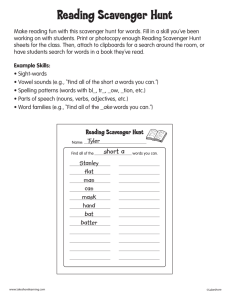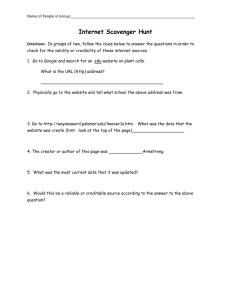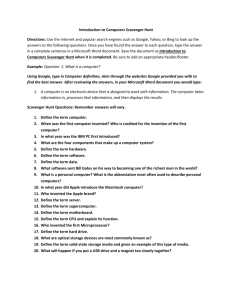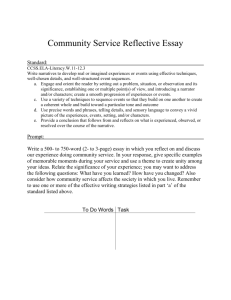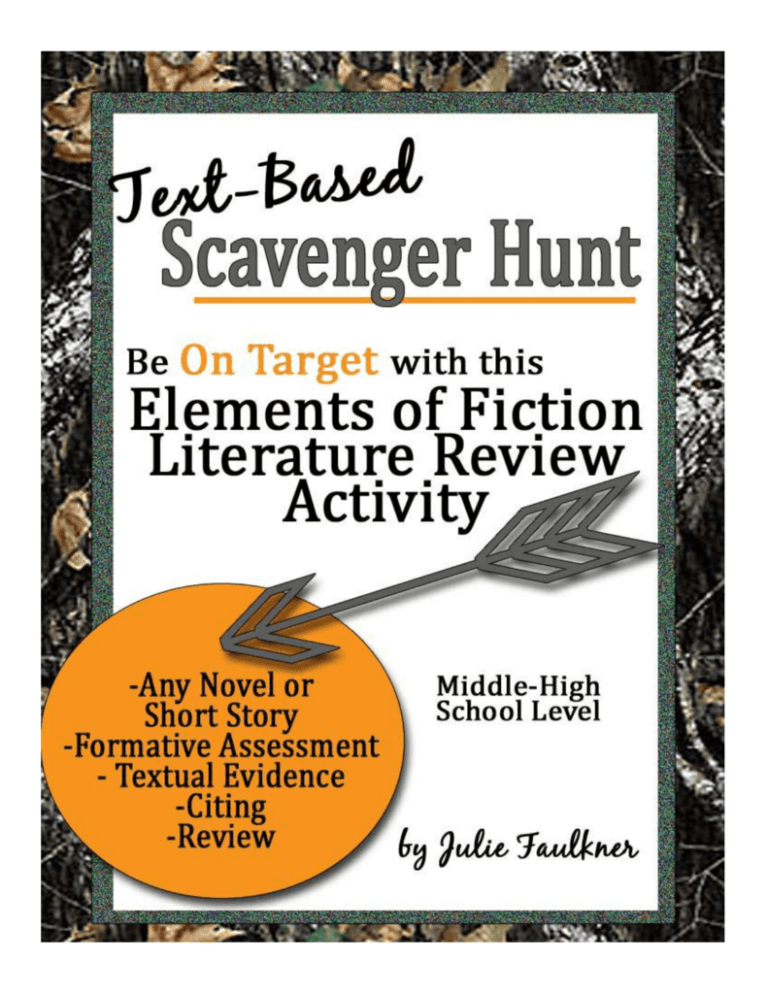
Elements of Fiction Scavenger Hunt
Directions: Search through our focus text to locate examples of the following elements of fiction. Be specific.
Literary Element
Internal Conflict (man v. self)
External Conflict (man v.
nature or man v. man)
Evidence of Mood
Figurative Language (simile,
metaphor, personification,
hyperbole)
Symbolism
Theme (choose one and find
examples/evidence of it)
Irony (verbal, situational,
dramatic)
Allusion
First evidence of the
element & page #
Second evidence of the
element & page #
Elements of Fiction Scavenger Hunt
Teacher’s Guide
By Julie Faulkner, 2012
www.teacherspayteachers.com/Store/Julie-Faulkner
About this product: This is an activity I do during or after reading any novel or short
story. Students must "hunt" through the text to find examples of theme, symbolism,
dialogue, etc. It requires them to have actual page numbers to textually support their
findings. Usually they do it with partner. Then we take turns filling them in together on
the board. This would also be an excellent substitute plan! As an alternative, consider
doing one box a day as a bell ringer or exit ticket during your novel or short story study.
Duration: If doing the activity from start to finish it does take 1-2 hours!
Extension: After completing the novel, or even a portion, consider having students
complete a constructed response task.
Task: Consider all the elements of literature the author used that you noted on
your scavenger hunt chart. Choose which element made the most impact on the
story over all. Be sure to clearly explicate that element as it was used in the novel,
and make your case effectively with specific and thorough support from the text.
Common Core Links (Building Block Skills):
CCSS.ELA-Literacy.RL.9-12.2 Determine a theme or central idea of a text
CCSS.ELA-Literacy.RL.9-12.3 Analyze how complex characters (e.g., those with
multiple or conflicting motivations) develop over the course of a text, interact with other
characters, and advance the plot or develop the theme.
CCSS.ELA-Literacy.RL.9-12.5 Analyze how an author’s choices concerning how to
structure a text, order events within it (e.g., parallel plots), and manipulate time (e.g.,
pacing, flashbacks) create such effects as mystery, tension, or surprise.
Related Products:
I have a fun, classroom-tested, print and go game for reviewing elements of literature "I
have who has" game @ http://www.teacherspayteachers.com/Product/Elements-ofLiterature-Terms-I-HaveWho-Has-Test-Prep-Review
Also, check out my Elements of Literature Skills-Based Assessment @
http://www.teacherspayteachers.com/Product/Narrative-Writing-Literary-Terms-SkillsBased-Unit-Test-EOC-Practice-938184
TPT Disclaimers:
The Common Core Standards were written and developed by The National Governors
Association Center for Best Practices and Council of Chief State School Officers. ©
Copyright 2010. National Governors Association Center for Best Practices and Council
of Chief State School Officers. All rights reserved.
Any claims of correlation or alignment to the CCSS Standards are solely those of Julie
Faulkner and have not been evaluated or endorsed by The National Governors
Association.
Thank you for shopping my
store! Follow me for updates. If this
resource worked for you, please hop
back on over to TPT and leave some
positive feedback!


